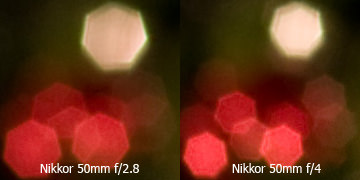Capturing an image that stands out and receives a lot of appreciation from others is itself another level of achievement for photographers.
Photography as a profession is emerging successfully.
It has widespread growth among the youngsters. A single piece of Photograph needs a lot of hard work and patience to achieve a perfect picture.
Hard work in this sense means adjustment of contrast, brightness, whitening, light, and other settings.
A single click needs a lot of feature adjustment, and post-processing, especially when the picture is taken in RAW format.
What is Bokeh in terms of photography?

There are even some additional adjustments in Photography that enhance the quality and color and data range of the pictures. Such as the chroma key set, Bokeh, vignette, sharpness, blur, etc.
These additional photography adjustments are excellent specs.
By the end of this blog, we will come to know details about Bokeh in Photography.
What is the Bokeh effect?

The effect of blur in an image on the areas that are out of focus is called the Bokeh effect.
Different sizes of lenses and different aperture sizes and shapes cause different Bokeh effects in the image.
What is Bokeh is used for? Is there something like a bad Bokeh or a good Bokeh?

A Bokeh effect is used to soften the background with soft blurry light circles. It could be an expertise unfocused Bokeh or an applied bokeh effect.
Something like capturing unfocused small led lights such as the Christmas lights creates the Bokeh effect using a wide aperture.
There’s no such thing as a good or bad Bokeh effect. You just need to create an artistic Bokeh effect as per your aperture size and settings.
Bokeh photography: unique representation of images

Bokeh photography is a unique effect applied to images. An image is usually captured with the Bokeh effect with a lens of wide-open aperture. ‘Bokeh’ means a blur or hazy effect.
The part of the image that remains out of focus where the bokeh effect is applied is parted into circular with soft light in different hues. It gives a different outlook to your image especially when you want to avoid background distraction in your image.
The bokeh effect is adjusted by the lens and not the camera and it is related to the depth of field of capturing the image. How? Let’s learn that.

When you focus on an area or object in the image to be framed, it means the area or object is inside the depth of field.
And the area out of focus is outside the depth of field where the focus is not applied. The effect depends upon the area that is out of focus or depth of field.
We can apply this effect to our images, and get some outstanding results.
Bokeh effect shapes
Is there anything like the shapes of Bokeh?? Yeah, you read that right. The question isn’t wrong. And the answer to this is YES!
The shapes of the Bokeh vary depending upon the number of blades(diaphragm)of the lens (as mentioned above the Bokeh effect is adjusted by the lens) and so is the shape.
1. 7-blades in the lens

Older lenses such as the Nikkor 50mm lens have 7 blades in the diaphragm which results in a heptagon(7 sided) shaped bokeh effect.
2. 9-blades in the lens

Whereas new lenses with 9 rounded blades in the diaphragm give a circular bokeh effect.
Conclusion:
The bokeh effect is unique and interesting. You can use it to avoid background distraction if you want the background in the image to be avoided. Many lenses create an excellent bokeh effect. For example, Canon 85mm f/1.2 II USM, Nikon 85mm f/1.8G.
![]()


